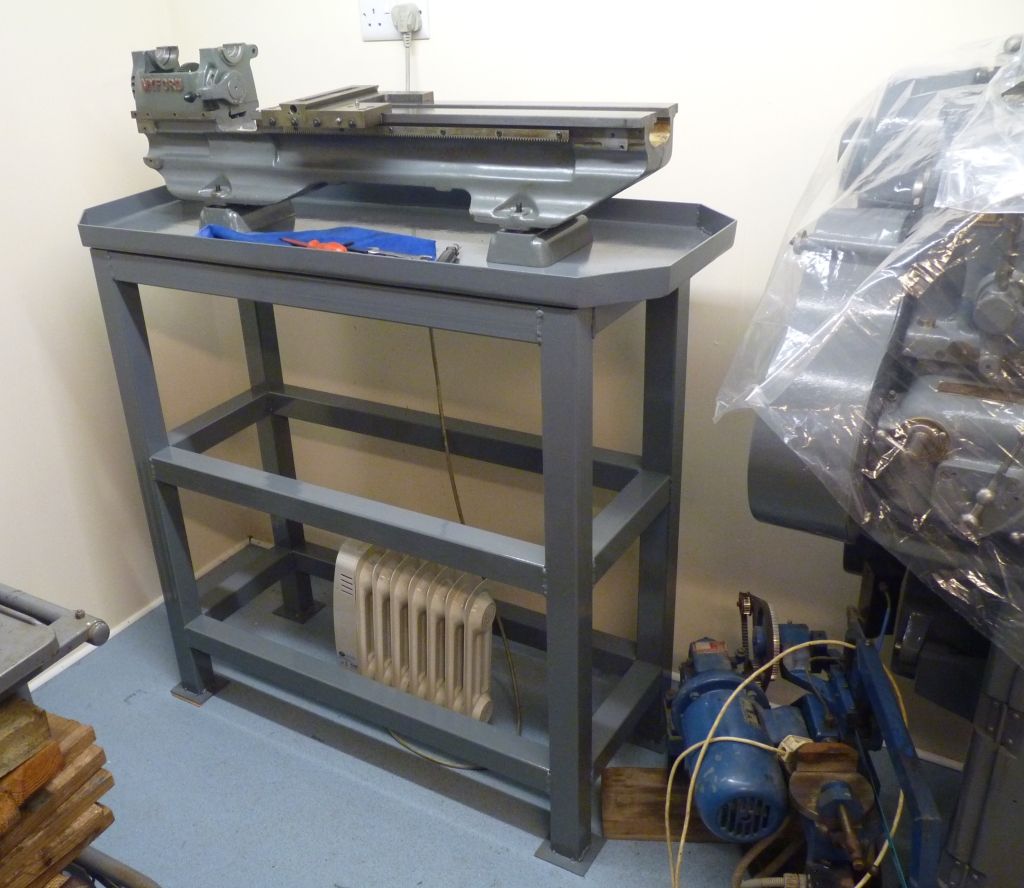LOTS of ML7 users on here to help you.
You don't have to have the Myford stand.
What is needed is a sturdy, stable, support for the lathe.
Riser blocks are a good idea, they will make "levelling" the lathe a lot easier. The main object is not to set the lathe absolutely level, as such, but to eliminate twist from the bed so that it cuts parallel.
It might be an idea to make the bench top from some thick kitchen worktop. Within reason, the thicker the better, for stiffness. A lathe mounted on a flexible surface will never give consistent results.
Having got a stiff surface, the riser blocks are useful to adjust the mounting feet of the lathe to eliminate twist from the bed.
HOW?
Ian Bradley's "The Amateurs Workshop" and his "Myford Series 7 Manual" both quote the method advocated by Myford. Sometimes known as "Rollie's Dad's Method"
Ian Bradley relates the procedure, and says which mounting to adjust and in which direction, to minimise twist..
Basically, you set a length of steel, at least 1" diameter, (the thicker the better, so aim for 1.5" or even 2" ) set to protrude 4 – 6" from the chuck.
Skim the OD to just clean up, before turning a thinner sectiojn in the middle, to leave a collar standing proud at each end. (A bit like a long cotton reel ) A light cut , without any any further adjustment over both collars should tell you if the lathe is cutting parallel. Different diameters at each end will indicate that it isn't, and the need to adjust the mounting feet under the Tailstock.
Follow the instructions to correct the fault, and take another very light skim, (0.003" or so The minimum to just clean up the collar ).
Repeat this procedure until both diameters are the same. Make small adjustments each time.
There is a certain amount of trial and error to begin, but having fixed the Headstock end, sensible adjustments under the Tailstock end should bring things to where they need to be.
Ideally, both collars will finish up being the same diameter.
It can be also done with an alignment bar held only in the chuck using a sensitive spirit level
Once the bed is free from twist, then the Alignment bar, between centres, can be clocked to align the Tailstock.
It would only be moved from this setting if it is desired to turn a taper, longer than can be achieved with the Top Slide.
Howard
Edited By Howard Lewis on 30/05/2022 16:26:27
Nigel Graham 2.








